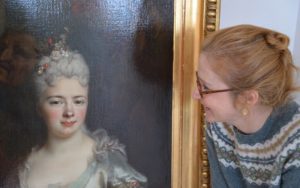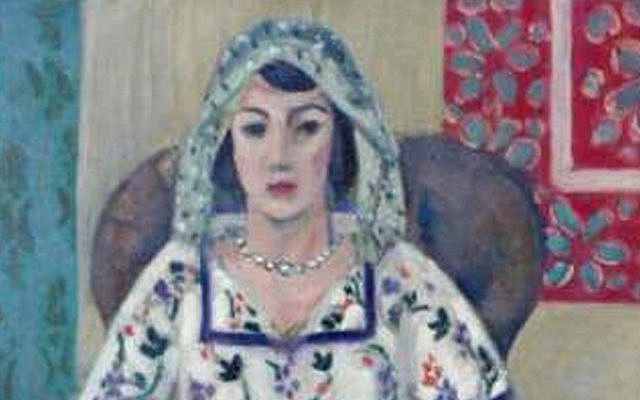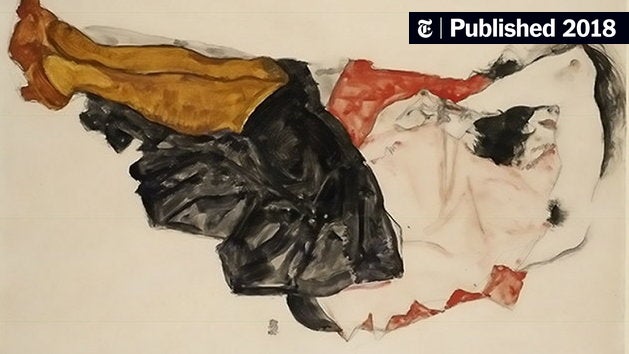|
Getting your Trinity Audio player ready...
|
Seeking Restitution for Nazi Looted Art Belonging to Jews Must Become a Chief Priority for all Jewish Organizations
By: Fern Sidman
As the world pauses to commemorate International Holocaust Remembrance Day, it appears that after eight decades since the Holocaust became the defining moment of the 20th century in terms of man’s inhumanity to man, justice for survivors of the Nazi genocide has still not been meted out.

Over the decades, the issue of granting restitution of Nazi looted art work owned by Jews prior to the advent of World War II still begs to be resolved.
In order to gain some context of the thorny issue of Nazi looted art, the United States Holocaust Memorial Museum in Washington, DC stated on their web site that during the Second World War, Adolf Hitler mandated that other nations’ cultural property be obtained, often forcibly, for the greater good of the state. The Nazis targeted private Jewish collections, public museums and organizations deemed to be at odds with Nazi ideology, such as Freemasons. The USHHM also stated that their goals were both financial and cultural. Hitler wanted to enrich the Third Reich and its leaders with exquisite and culturally significant treasures, sell looted art that did not reflect the Reich’s ideals for foreign currency, and create the Führermuseum, envisioned as the cultural center of the world, in his hometown of Linz, Austria.

Between 1933 and 1945, millions of cultural objects were relocated, confiscated and looted: Persecutees of the Nazi tyranny became victims of state-organized cultural property looting in the form of “Aryanizations,” expropriations, forced sales, or forced donations, according to the Lost Art Database web site.
The USHMM report also stated that the plunder and looting of art and other treasures was not limited to the Third Reich, however. The Soviet and American armies also participated, the former more thoroughly and systematically, the latter at the level of individuals stealing for personal gain. Other Axis countries also looted private Jewish collections.
At the end of the war, the activities of the Soviet trophy commissions, the thefts of individual military personnel of the Allied forces, or territorial shifts led to the fact that cultural property that had been removed from storage were no longer returned to their original location and were looted, transferred, or relocated as “war trophy.”The Lost Art Database web site also reported that in the Soviet Union in particular, they were intended to serve as compensation for war damage and losses suffered.

The Washington Conference of Holocaust Era Assets (1998), followed by the Terezin Declaration (2009) renewed efforts to restitute cultural goods to their rightful owners. As a result, various national organizations were created and numerous laws passed. Information about looted art has increasingly moved online, including databases of individual works still missing or items with unknown provenance, according to the USHMM web site.
Many valuable paintings done by such iconic artists as Pablo Picasso and Matisse and others of that genre that were owned by Jews prior to the Holocaust in Europe, eventually ended up in the hands of the Nazis. Thereafter, they were obtained by private collectors, many of whom either gifted them to museums around the world or they landed up there through other methods.
Recently, the Jewish Voice published a story about heirs of a Jewish couple that fled the Nazi onslaught during World War II in Europe who are now calling for the return of a Pablo Picasso painting valued today at up to $200 million. The painting was sold by their antecedents at practically next to nothing in order to escape certain death by the Nazi barbarians.

The piece of art in question was given to the Solomon R. Guggenheim museum in New York City as a gift from an art dealer who paid Karl and Rosi Adler only $1,552 for the painting. The desperate couple had little time to get out of Europe with their lives, the Post reported. The piece of art was created in 1904 by Picasso and was named, “Woman Ironing” (La repasseuse).
Five of the couple’s present-day heirs, some of whom are great grandchildren, argued in court that, “Adler would not have disposed of the painting at the time and price that he did, but for the Nazi persecution to which he and his family had been, and would continue to be, subjected, “ the Post reported.
The report also indicated that the relatives charge in the legal papers, that the “painting is currently in the wrongful possession of the Guggenheim” and they say that the foundation has refused to give it up. The report said that the relatives have demanded either the return of the painting or its estimated $100 million to $200 million value.
In November 2013, it was reported that a collection of 1,500 artworks confiscated by the Nazis in the 1930s and 1940s had been discovered in the German city of Munich, according to report on the BBC web site.
The trove included works by Matisse, Picasso and Chagall, the news magazine Focus reported.
The BBC report indicated that some of the works were declared as degenerate by the Nazis, while others were stolen from or forcibly sold for a pittance by Jewish art collectors.
This shocking discovery turned out to be one of the largest recoveries of looted art. At the time, investigators put the value of the works at about one billion euros (£846m; $1.35bn), Focus said.
Many such tragic narratives exist of those descendants of Holocaust survivors who are engaged in protracted legal imbroglios with museums in order to have these pieces of art that rightfully belong to them returned.
In rare cases, justice can be obtained and there appears to be a glimmer of hope for those descendants of Holocaust survivors in terms of restitution.
In February 2022, the Guardian of the UK reported that approximately 80 years after it was looted by the Nazis, an expressionist painting had been returned to the descendants of a German-Jewish couple by the Royal Museums of Fine Arts in Brussels.
Flowers, a 1913 still life by the German artist Lovis Corinth, was entrusted to the museums in 1951, because postwar investigators were unable to trace the original owners, the Guardian reported.
After years of research, the painting had been returned, the first restitution of any artwork looted from a Jewish family in the second world war by the Royal Museums of Fine Arts, which covers six museums, with works spanning the old masters to Magritte.
The Guardian also reported that Thomas Dermine, Belgium’s secretary of state in charge of museums, handed the work to a lawyer representing the nine great-grandchildren of Gustav and Emma Mayer, a German-Jewish couple who fled Germany in 1938.
According to a 2002 report in Prologue Magazine which was posted on the National Archives web site, museums and galleries have been prompted to research the provenance of paintings, decorative arts, and sculpture in their collections in order to confirm that none of the pieces were looted by the Nazis during World War II. The report stated that although the Nazis were known for their thorough recordkeeping, a significant amount of artwork still is missing and unaccounted for.
The Allied armies salvaged many of these German records, but do these records clearly tell the story of an art piece? And what is the story of the Allied attempts to find the owners of more than two million looted art pieces and bring German art dealers and Nazi collaborators to justice?
In recent years, renewed interest in Holocaust-era assets has prompted heirs, art historians, and curators to ask these questions concerning art provenance and claims research. Until recently, very few researchers were interested in economic and financial aspects of the Nazi regime and the war; even fewer in Holocaust-related assets. Now, provenance research of looted art has become an important activity for auction houses, art dealers, and art museums, as was reported by Prologue Magazine.

Yet and still, some museums, art galleries and private collections are reluctant to part with the paintings in their possession that were in fact looted by the Nazis from their Jewish owners. Many a lawsuit has been filed by descendants and continues to be until this day.
In order to achieve a modicum of justice from recalcitrant museums and those who are indifferent or even callous as it concerns the restitution of looted art, an inspired campaign must be waged to alert donors to these institutions of the fact that the museum that they are giving their money to is stubbornly holding on to stolen items of tremendous value.
And this means that all Jewish organizations, be they large and small, be they headquartered in North America or throughout the world, must make this issue of restitution of Nazi looted art a main priority. They must lead the way in this campaign for justice for descendants of Holocaust survivors and for the memory of those that that perished during this nightmarish period of history.
In the interest of achieving fairness, equitability and justice, descendants of Jewish owners of artwork plundered by the Nazis must be allowed to retrieve these valuable works as part of their rightful inheritance. In an age when the Holocaust is being publicly denied and refuted and the memories of those who lives were snuffed out by the Nazi miscreants are being denigrated by anti-Semitic vandals as well as in the world of academia, the return of Jewish owned artwork is further proof that out of the darkest period of modern history, a light of hope exists for those who suffered immeasurably.




